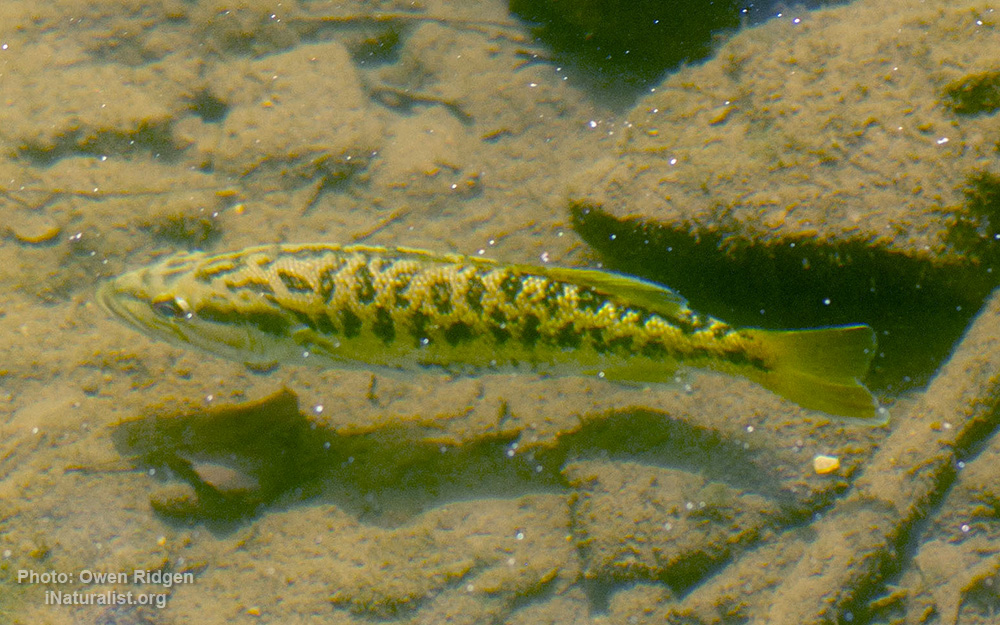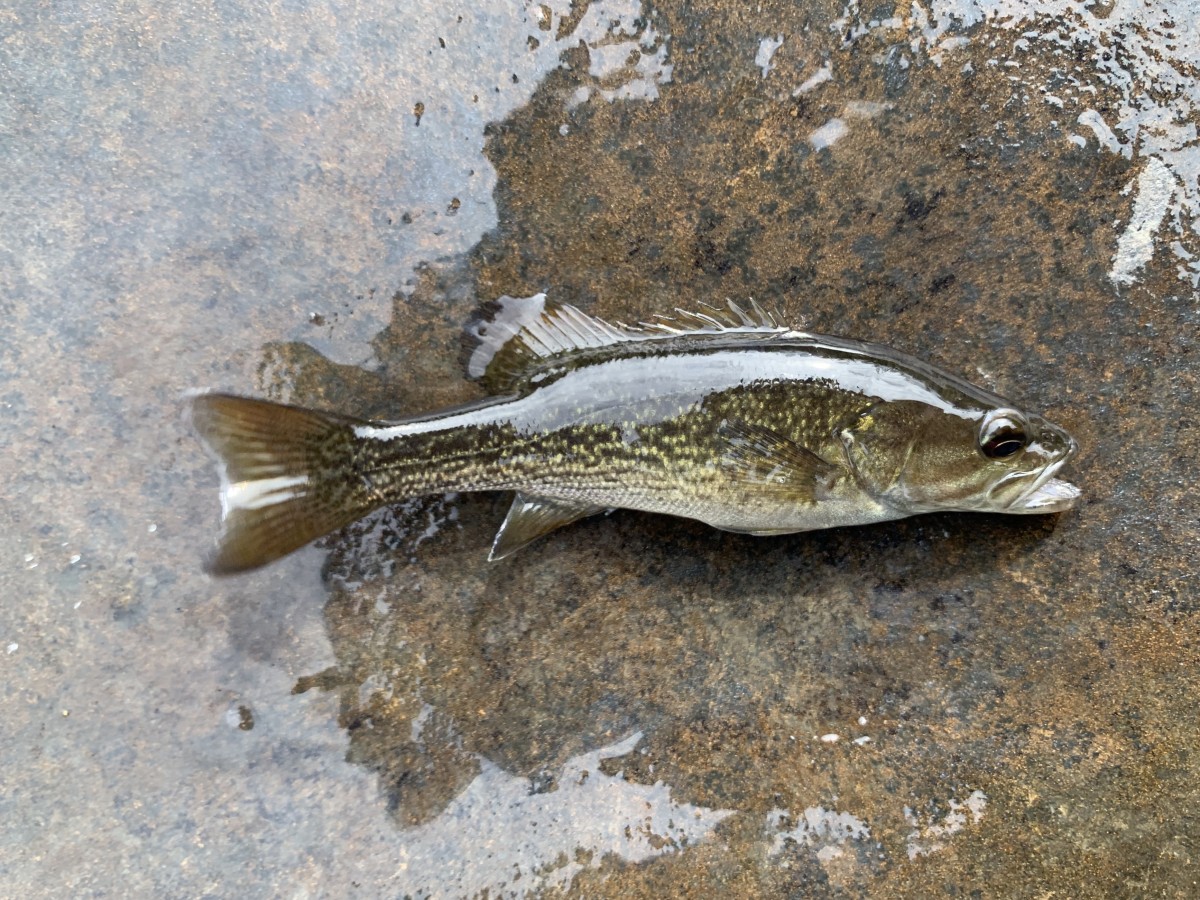Cahaba bass
(Micropterus cahabae)

Classification
General data
Endemic to the Cahaba River system in the Piedmont region of central Alabama, USA.
Max length : 36; max. published weight: 800 g
Dorsal spines (total): 10; Dorsal soft rays (total): 11-12; Anal spines: 3.
Distinguished from all congeners, except Micropterus tallapoosae, by the absence of red or orange pigmentation on fin rays (fin rays green or yellow-green);
From M. tallapoosae and M. chattahoochae by having 68-72 lateral-line scales (vs. 61-67 ) and 30-32 scales around caudle peduncle ( vs. 26-29);
From M. chattahoochae by its narrower head (postfrontal width 11.2% SL vs. 11.8%);
From M. coosae by its head width 11.2% (vs. 11.0%);
From M. chattahoochae and M. cf. coosae (Savannah River) by a smaller tongue tooth patch (less than 1.0 mm in 51.7%, absent in 34.5% of specimens vs. in 66.7% or more and absent in 9.0% or less)
and from M. warriorensis by more often having a tooth patch (absent in 34.5% vs. 82.9%).
It further differs from all species by a unique pigmentation pattern along the midline of the body, having 6-12 blotches with the anterior 6-9 shorter, wider vertical bars followed posteriorly by rounded spots.












